
Treatment Resource Manual for Speech-Language Pathology.
Sixth Edition
Froma P. Roth, Colleen K. Worthington
Details: 539 pages, 2-Color, Softcover (with lay-flat binding), 8.5" x 11"
ISBN13: 978-1-63550-118-6
© 2021 | Available
Click here for the new edition.
The thoroughly revised Sixth Edition of the best-selling Treatment Resource Manual for Speech-Language Pathology remains an ideal textbook for clinical methods courses in speech-language pathology, as well as for students entering their clinical practicum or preparing for certification and licensure. It is also a beloved go-to resource for practicing clinicians who need a thorough guide to effective intervention approaches/strategies.
This detailed, evidence-based book includes complete coverage of common disorder characteristics, treatment approaches, information on reporting techniques, and patient profiles across a wide range of child and adult client populations. The text is divided into two sections. The first part is focused on preparing for effective intervention, and the second part, the bulk of the book, is devoted to therapy strategies for specific disorders. Each of these chapters features a brief description of the disorder, case examples, specific suggestions for the selection of therapy targets, and sample therapy activities. Each chapter concludes with a set of helpful hints on intervention and a selected list of available therapy materials and resources.
New to the Sixth Edition
This new edition includes updated citations and references throughout as well as current information on treatment efficacy in all disorder chapters to reflect recent developments in the field. In addition, the authors have added the following:
- A new chapter on Contemporary Issues including critical thinking, telepractice, simulation technologies, and coding and reimbursement
- New tables on skill development in gesture, feeding, and vision
- New information on therapist effects/therapeutic alliance
- Coverage of emerging techniques for voice disorders and transgender clients
- Expanded information on:
- Childhood Apraxia of Speech
- Cochlear Implants
- Cultural and Linguistic Diversity
- Interprofessional Practice
- Shared Book-Reading
- Traumatic Brain Injury
- Treatment Dosage/Intensity
- Vocabulary Development
Key Features
- Bolded key terms with an end-of-book glossary
- A multitude of case examples, reference tables, charts, figures, and reproducible forms
- Lists of Additional Resources in each chapter
- Access to a PluralPlus companion website containing PowerPoint lecture slides and quizzes for each chapter, and all of the forms from the book in digital format for easy duplication and customization to specific experiences
Review
"Named to Doody's Core Titles in the Health Sciences - Speech, Language & Hearing 2020 list."
—Doody's (May 2020)
"This is an excellent resource for clinicians in speech-language pathology, whether beginners or seasoned experts. It has a plethora of helpful forms and ideas for therapy. There are books that focus on clinical methods, but this is a one-of-a-kind resource manual that has no real competitor. I have used it for years in an undergraduate clinical methods class and the students have commented that it is easy to read and helpful. When they get into the clinic, I often see them using it to prepare for their therapy sessions. The authors have updated citations and references throughout to keep up with changes in the field. They also have added a new chapter on contemporary issues, which includes topics like telepractice and simulation technologies and new information in existing chapters (e.g., transgender voice therapy in the chapter on voice). These additions and updates justify a new edition. ...Clinicians in the field should consider this book a core title in their libraries, and training programs should have it on hand for their student clinicians to reference."
—Matthew H. Rouse, MS, SLPD, Biola University, in Doody's Book Reviews
“The sixth edition of the Treatment Resource Manual for Speech-Language Pathology is a practical summary of interventions available to Speech and Language Therapists (SLTs), referring to the evidence base to outline key interventions available as well as practical tips for implementation.
The first two chapters of this book cover the core skills needed for practising SLTs, including
target setting, therapy approaches, session design and report writing. Key factors of intervention
planning are discussed, including group size, session design, dosage and discharge criteria. In particular, the accessible summary of how to write targets is very helpful for student SLTs on placement and Newly Qualified Practitioners (NQPs)….
The main body of the textbook looks in detail at interventions for specific client groups, such as
speech sound disorders, language difficulties, Autism, dysfluency and voice disorders, which are all appropriate for SLTs working in paediatric settings. The chapters summarising speech sound disorders and dysfluency are particularly comprehensive, summarising a variety of different intervention types to support the development of a holistic therapy plan. The sample activities outlined are very appropriate for student SLTs and NQPs designing initial session plans, giving practical advice on how to deliver therapy.
A strength of this textbook is the use of case studies within each chapter, which gives an overview of a client and outlines the clinical decision making behind target setting and intervention delivery. Some case studies include multiple examples of what intervention can be delivered, giving confidence to student SLTs and NQPs when designing a therapy plan. The Appendices also provide helpful reference guides to support practitioners becoming familiar with terminology and developmental norms. Each chapter also contains “helpful hints”, summarising key advice that can be given to others as well as considerations to be made during therapy delivery. These sections can support student SLTs and NQPs in giving advice to other agents of change, such as teachers and parents, which can help to develop NQP competencies.
The final three chapters consider key ideas to ensure client-centred care, including family counselling and cultural competency. In particular, the chapter on cultural competency introduces important themes within inclusive practice, giving summaries of linguistic differences found within client groups and describing different types of multilingualism. This is a very important chapter that can help student SLTs and NQPs ensure they are making client-centred clinical decisions, and provides an initial reference point for further reading into an important competency.
… This textbook is recommended for student SLTs or NQPs that are being introduced to paediatric intervention, as it supports a variety of aspects of clinical decision making, from target setting to practical implementation of intervention sessions to advice that can be given to other agents of change…”
–Hayley Smith, NHS Trust, London, UK from Child Language Teaching and Therapy (December 2022)
Case Examples by Disorder
List of Tables
List of Forms and Figures
Preface
Acknowledgments
About the Authors
Part One. Preparing for Effective Intervention
Chapter 1. The Essential Ingredients of Good Therapy: Basic Skills
Philosophy
Universal Design Principles for Learning: An Overarching Framework
General Principles of Intervention
Programming
Selection of Therapy Targets
Sequencing of Therapy Targets
Generalization/Carryover
Termination of Therapy
Formulation of Behavioral Objectives
Theories of Learning
Innateness Theory/Biological Model
Behavioral Model
Constructivism/Interactionist/Integrative Model
Behavior Modification
Types of Reinforcement
Positive Behavioral Interventions and Supports
Schedules of Reinforcement
Key Teaching/Scaffolding Strategies
Homework
Session Design
Basic Training Protocol
Task Order
Dynamics of Therapy
Group Therapy
Data Collection
Recording Session Data
Probes
Collaborative Service Delivery Models
Multitiered Systems of Support/Response to Intervention
Current Challenges of RTI
Treatment Efficacy/Evidence-Based Practice
Treatment Intensity and Dosage
Setting Specific Professional Terminology
Troubleshooting Tips for Therapy Sessions
Conclusion
Additional Resources
Appendix 1–A: Therapy Observation Checklist
Appendix 1–B: Worksheet for Identifying Behavioral Objectives
Appendix 1–C: Worksheet for Formulating and Writing Behavioral Objectives
Appendix 1–D: Sample Daily Therapy Plan
Appendix 1–E: Daily Therapy Plan
Appendix 1–F: Report of Observation Hours
Appendix 1–G: Instructions for Using Data Recording Forms
Appendix 1–H: Sample Positive Behavior Intervention and Support Plan
Chapter 2. Information Reporting Systems and Techniques
Philosophy
Technical Writing Style
Report Formats
Initial Therapy Plan
Session Notes
Progress and Final Reports
Tips for Proofreading Clinical Reports
Individualized Education Program
Due Process
Individualized Family Service Plan
504 Plan
Professional Correspondence
Health Insurance Portability and Accountability Act
Additional Resources
Appendix 2–A: Sample Initial Therapy Plan
Appendix 2–B: Sample Progress Report
Appendix 2–C: Health Insurance Portability and Accountability Act (HIPAA)
Part Two. Providing Treatment for Communication Disorders
Chapter 3. Intervention for Articulation and Phonology in Children
Treatment Approaches
Traditional
Motor-Kinesthetic
Distinctive Features
Paired Oppositions–Minimal and Maximal
Phonological Processes
Cycles Approach
Core Vocabulary
Metaphon
Oral-Motor Considerations
Treatment Efficacy and Evidence-Based Practice
Target Selection for Intervention Programming
Developmental
Nondevelopmental
Helpful Hints (Functional Articulation Disorders)
Helpful Hints (Phonological Disorders)
Organic Articulation Disorders
Cleft Palate
Helpful Hints
Hearing Impairment
Helpful Hints
Childhood Apraxia of Speech
Helpful Hints
Conclusion
Articulation and Phonology
Oral-Motor Dysfunction
Additional Resources
Articulation
Phonology
Appendix 3–A: Phonetic Placement Instructions for Difficult-to-Teach Sounds
Appendix 3–B: Diadochokinetic Rates for Children
Introduction to Chapters 4 and 5. Introduction to Language Intervention for Children and Adolescents
Classification of Language Disorders
Relationship Between Oral Language and Literacy
Role of the Speech-Language Pathologist in Literacy
Theoretical Models of Intervention
Treatment Efficacy/Evidence-Based Practice
Chapter 4. Intervention for Language in Infants and Preschool Children
Intervention with Infants (Birth to 3 Years)
ASHA Early Intervention Guidelines
Prelinguistic and Early Language Therapy Targets
Helpful Hints
Intervention with Children (3 to 5 Years)
Treatment Approaches for Infants, Toddlers, and Preschoolers
Emergent Literacy Intervention (Birth Through Preschool Years)
Helpful Hints
Conclusion
Additional Resources
Appendix 4–A: Developmental Language Milestones: Birth to 5 Years
Appendix 4–B: Gross and Fine Motor Developmental Milestones
Appendix 4–C: Stages of Cognitive Development
Appendix 4–D: Gesture Developmental Milestones: 9 to 16 Months
Appendix 4–E: Development of Vision
Appendix 4–F: Feeding Developmental Milestones
Appendix 4–G: Stages of Play Development
Appendix 4–H: Developmental Toy List
Appendix 4–I: Examples of Lessons from “Promoting Awareness of Speech Sounds” (PASS)
Chapter 5. Intervention for Language in School-Age Children Through Adolescence
Characteristics of Students Ages 5 to 10 Years
Characteristics of Adolescents 10 to 18 Years
Intervention Considerations for School-Age Children and Adolescents
The Common Core State Standards
Treatment Approaches for School-Age Children and Adolescents
Instructional Strategies for Writing
Helpful Hints
Conclusion
Additional Resources
Appendix 5–A: Types of Cohesion
Chapter 6. Intervention for Autism Spectrum Disorder (ASD)
Overview of Autism Spectrum Disorder
Incidence
Etiology
Characteristics of Children with ASD
Social Communication
Repetitive/Restricted Behaviors, Interests, and Activities
Language
Emergent Literacy and Literacy
Medications
Outcomes
Treatment Efficacy/Evidence-Based Practice
Treatment for Autism
Theoretical Models
Treatment Approaches
Helpful Hints
Conclusion
Additional Resources
Chapter 7. Intervention for Adult Aphasia with Introduction to Traumatic Brain Injury
Froma P. Roth, Colleen K. Worthington, and Emily DeAngelis
Aphasia
Classification of Aphasia Syndromes
Treatment Efficacy/Evidence-Based Practice
Treatment for Aphasia
Neuroplasticity
Theoretical Orientations to Aphasia Treatment
Guidelines for Programming and Implementing Therapy
Specific Intervention Procedures
Helpful Hints
Conclusion
Additional Resources
Traumatic Brain Injury
Communication
Executive Functioning
Attention and Memory
Behavior
Treatment Efficacy/Evidence-Based Practice
Treatment for Traumatic Brain Injury
Helpful Hints
Conclusion
Additional Resources
Appendix 7–A: Suggestions for Enhancing Verbal Interaction With a Family Member With Aphasia
Appendix 7–B: Guidelines for Conversational Coaching
Chapter 8. Intervention for Motor-Speech Disorders: The Dysarthrias, Apraxia of Speech, and Dysphagia
Treatment for Motor-Speech Disorders
The Dysarthrias
Treatment Efficacy/Evidence-Based Practice
Treatment for the Dysarthrias
Helpful Hints
Apraxia of Speech
Treatment Efficacy/Evidence-Based Practice
Treatment for Apraxia of Speech
Helpful Hints
Conclusion
Additional Resources
Dysphagia
Treatment for Dysphagia
Helpful Hints
Conclusion
Additional Resources
Chapter 9. Intervention for Fluency
Categories of Stuttering Behaviors
Core Behaviors
Secondary Behaviors
Developmental Disfluencies Versus Stuttering
Treatment for Fluency Disorders
Treatment Efficacy/Evidence-Based Practice
Intervention Techniques
Helpful Hints
Conclusion
Additional Resources
Appendix 9–A: Sample Phrases, Questions, and Monologues
Chapter 10. Intervention for Voice and Alaryngeal Speech
Voice Disorders
Classification of Voice Disorders
Treatment Efficacy/Evidence-Based Practice
Treatment for Voice Disorders
Intervention Techniques
Transgender Voice
Helpful Hints
Alaryngeal Speech
Treatment for Alaryngeal Clients
Mechanical Devices
Esophageal Speech
Tracheoesophageal (TEP) Speech
Helpful Hints
Conclusion
Additional Resources
Appendix 10–A: Additional Dialogue Scripts for Voice Therapy Activities
Chapter 11. Client and Family Counseling
Five Key Traits of an Effective Counselor
Stages of Counseling
Establishing the Therapeutic Relationship
Implementing Counseling Intervention
Terminating the Therapeutic Relationship
Client and Family Emotional Reactions to Communicative Disorders
Counseling Techniques for Communicative Disorders
Group Counseling
Family Systems Counseling
Helpful Hints
Conclusion
Additional Resources
Chapter 12. Multicultural Issues in Intervention
Cultural Competence
Cultural/Ethnic Background
Socioeconomic Status (SES)
Linguistic Differences
Clinical Considerations for Children
Terminology
Patterns of Second Language Acquisition
Educational Models
Clinical Considerations for Adult Populations
Clinical Considerations for Multilingual Populations with Language Disorders
Helpful Hints
Conclusion
Additional Resources
Chapter 13. Contemporary Issues
Critical Thinking
Components of Critical Thinking
Strategies/Techniques for Promoting Critical Thinking
Telepractice
Privacy and Regulatory Issues
Basic Clinician Competencies With Technology
Candidates for Telepractice Services
Simulation Technologies
Standardized Patients (SPs)
Computer-Based Learning Experiences (CBLEs)
Implementation
Coding and Reimbursement
CPT Codes
ICD-10 Codes
Documentation
Conclusion
Appendix A. ASHA Code of Ethics
Appendix B. International Phonetic Alphabet Symbols
Appendix C. Glossary of Selected Medical Terms
Appendix D. Schematic of the Vocal Tract
References
Index
Purchase of Treatment Resource Manual for Speech-Language Pathology, Sixth Edition comes with access to supplementary student and instructor materials on a PluralPlus companion website.
STUDENTS:
To access the student materials, you must register the access code printed on the inside front cover of your book on the companion website in order to log in.
INSTRUCTORS:
To access the instructor materials, you must contact Plural Publishing, Inc. to be verified as an instructor and receive your access code.
Email: instructormaterials@pluralpublishing.com
Tel: 866-758-7251 (toll free) or 858-492-1555

Hegde's PocketGuide to Communication Disorders
Second Edition
M.N. Hegde
Details: 496 pages, 2-Color, Softcover, 4.5" x 8"
ISBN13: 978-1-94488-314-0
© 2018 | Available

Hegde's PocketGuide to Treatment in Speech-Language Pathology.
Fourth Edition
M.N. Hegde
Details: 612 pages, 2-Color, Softcover, 4.5" x 8"
ISBN13: 978-1-94488-312-6
© 2018 | Available

Counseling in Communication Disorders: A Wellness Perspective
Third Edition
Audrey L. Holland, Ryan L. Nelson
Details: 370 pages, B&W, Softcover, 6" x 9"
ISBN13: 978-1-63550-045-5
© 2020 | Available

Treatment of Voice Disorders
Second Edition
Robert T. Sataloff
Details: 558 pages, Full Color, Softcover, 8.5" x 11"
ISBN13: 978-1-59756-861-6
© 2017 | Available

Telepractice in Speech-Language Pathology
First Edition
K. Todd Houston
Details: 392 pages, B&W, Softcover, 6" x 9"
ISBN13: 978-1-59756-479-3
© 2014 | Available

Language and Literacy Development: English Learners with Communication Disorders, From Theory to Application
Second Edition
Linda I. Rosa-Lugo, Florin Mihai, Joyce W. Nutta
Details: 432 pages, B&W, Softcover, 6" x 9"
ISBN13: 978-1-63550-153-7
© 2020 | Available

Exercises for Voice Therapy
Third Edition
Alison Behrman, John Haskell
Details: 289 pages, B&W, Softcover, 8.5" x 11"
ISBN13: 978-1-63550-183-4
© 2020 | Available

Inpatient Functional Communication Interview: Screening, Assessment, and Intervention
First Edition
Robyn O'Halloran, Linda Worrall, Deborah Toffolo, Chris Code
Details: 170 pages, B&W, Spiral Bound, 8.5" x 11"
ISBN13: 978-1-63550172-8
© 2020 | Available
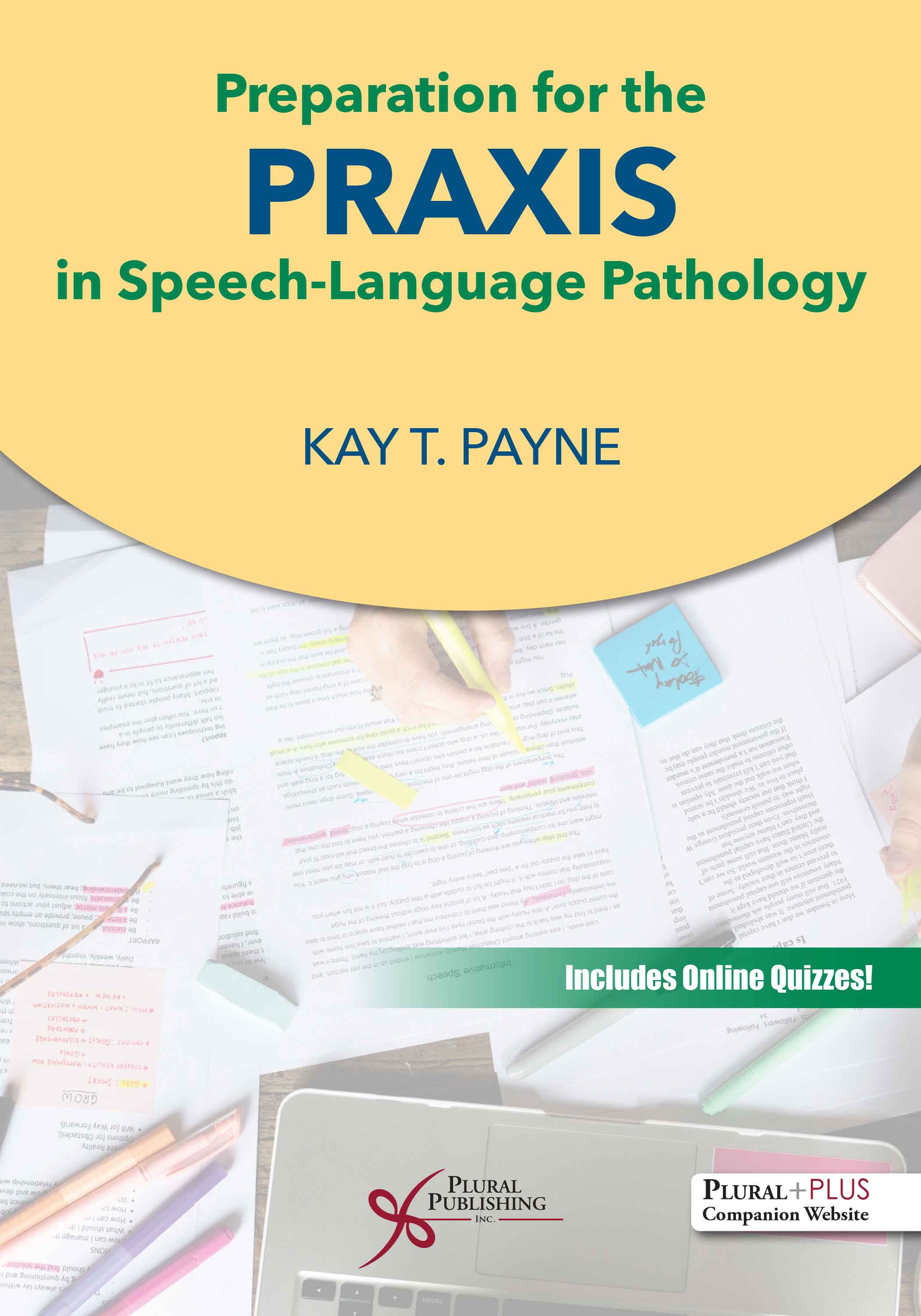
Preparation for the Praxis in Speech-Language Pathology
First Edition
Kay T. Payne
Details: 221 pages, B&W, Softcover, 7" x 10"
ISBN13: 978-1-63550-314-2
© 2020 | Available

IEP Goal Writing for Speech-Language Pathologists: Utilizing State Standards
Second Edition
Lydia Kopel, Elissa Kilduff
Details: 243 pages, B&W, Softcover with layflat binding, 8.5" x 11"
ISBN13: 978-1-63550-202-2
© 2021 | Available

Multi-Tiered Systems of Support: Implementation Tools for Speech-Language Pathologists in Education
First Edition
Lesley Sylvan
Details: 247 pages, B&W, Softcover, 7" x 10"
ISBN13: 978-1-63550-294-7
© 2021 | Available
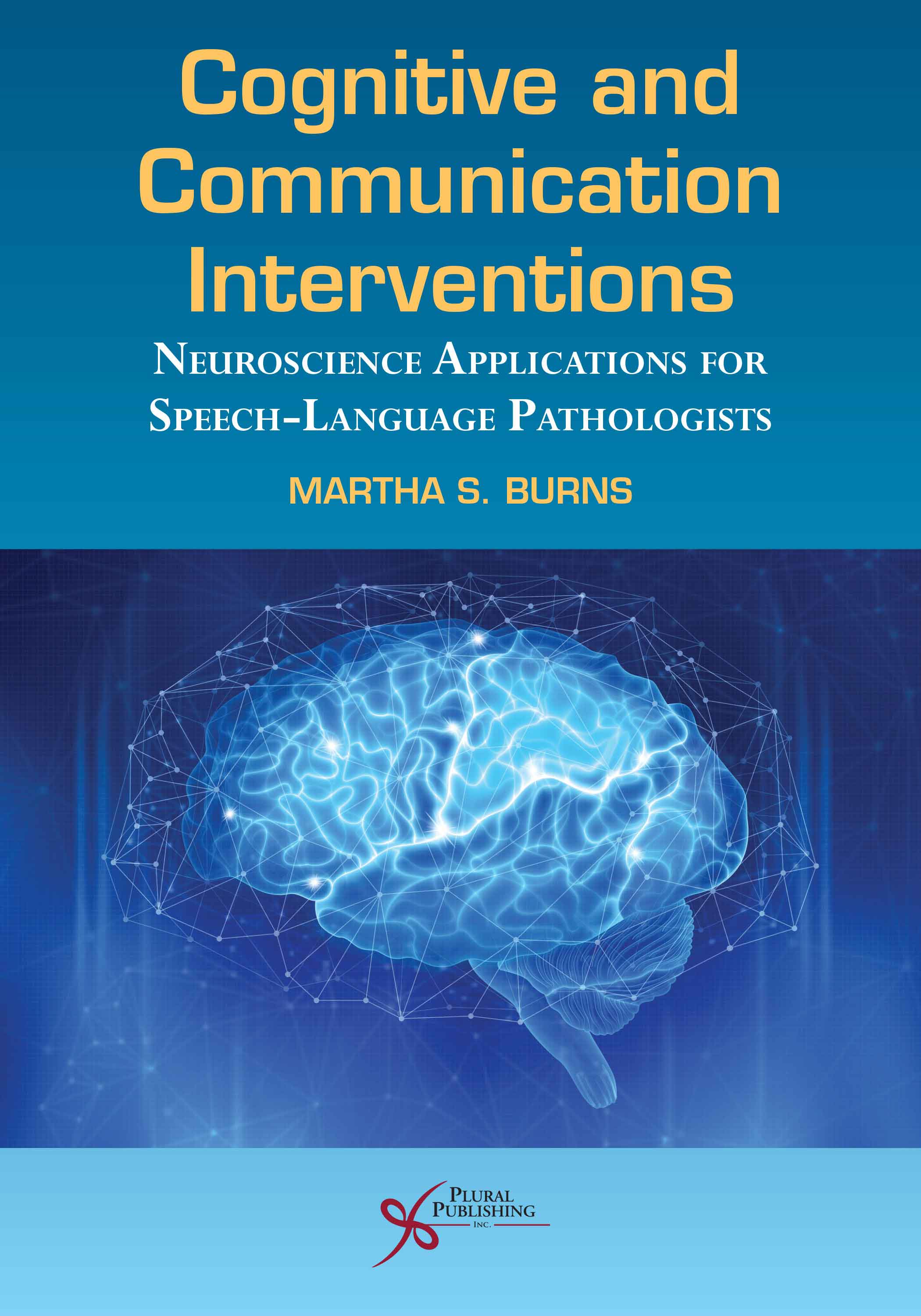
Cognitive and Communication Interventions: Neuroscience Applications for Speech-Language Pathologists
First Edition
Martha S. Burns
Details: 318 pages, B&W, Softcover, 7" x 10"
ISBN13: 978-1-63550-292-3
© 2021 | Available
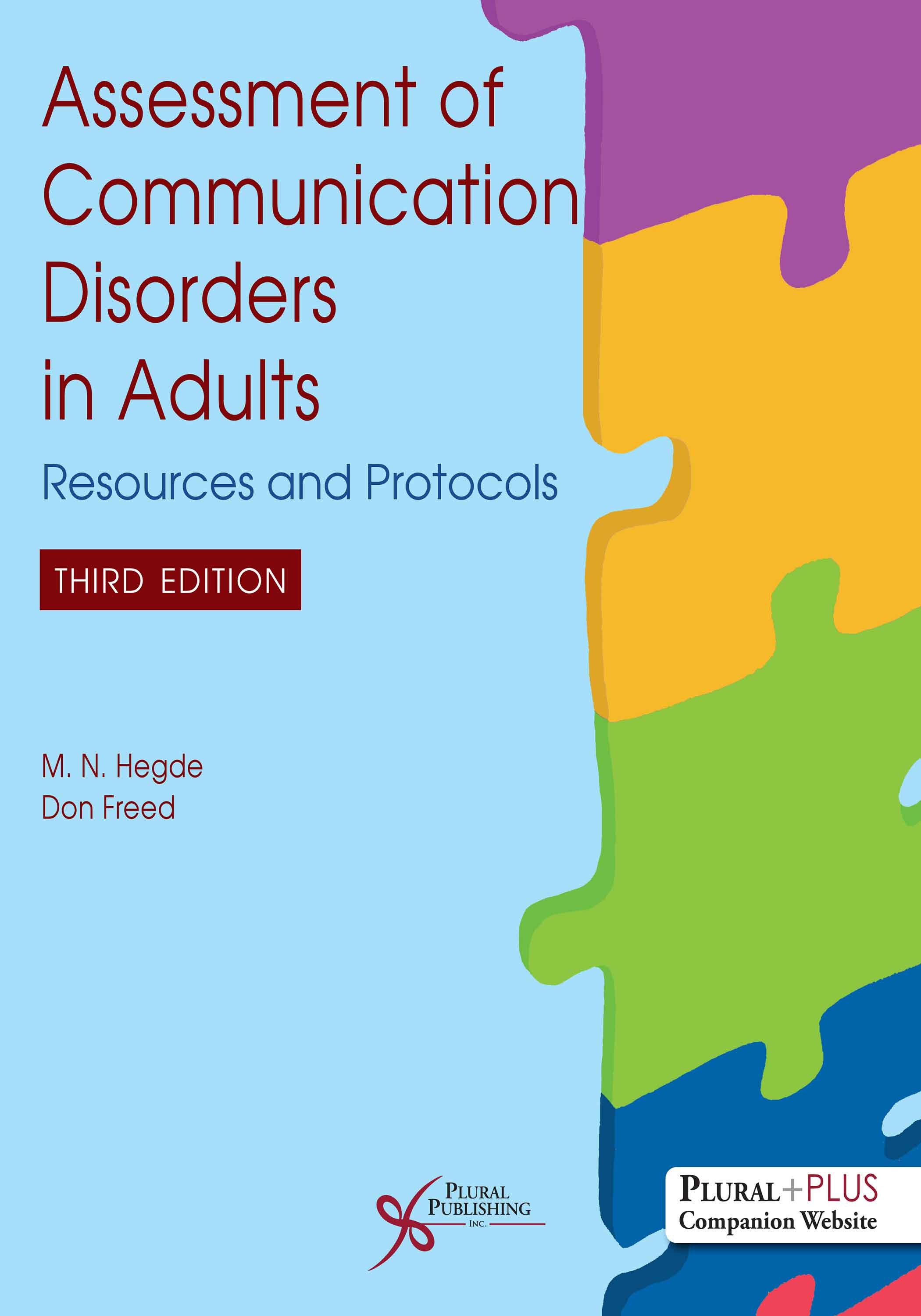
Assessment of Communication Disorders in Adults: Resources and Protocols
Third Edition
M.N. Hegde, Donald B. Freed
Details: 446 pages, B&W, Softcover, 8.5" x 11"
ISBN13: 978-1-63550-263-3
© 2022 | Available

Voice Disorders
Fourth Edition
Christine Sapienza, Bari Hoffman
Details: 517 pages, Full Color, Softcover, 7" x 10"
ISBN13: 978-1-63550-251-0
© 2022 | Available

Language Sampling With Children and Adolescents: Implications for Intervention
Third Edition
Marilyn A. Nippold
Details: 437 pages, B&W, Softcover, 7" x 10"
ISBN13: 978-1-63550-276-3
© 2021 | Available

Assessment of Communication Disorders in Children: Resources and Protocols
Fourth Edition
M.N. Hegde, Frances Pomaville
Details: 444 pages, B&W, Softcover, 8.5" x 11"
ISBN13: 978-1-63550-266-4
© 2022 | Available

A Handbook on Stuttering
Seventh Edition
Oliver Bloodstein, Nan Bernstein Ratner, Shelley B. Brundage
Details: 581 pages, B&W, Hardcover, 8.5" x 11"
ISBN13: 978-1-63550-317-3
© 2021 | Available
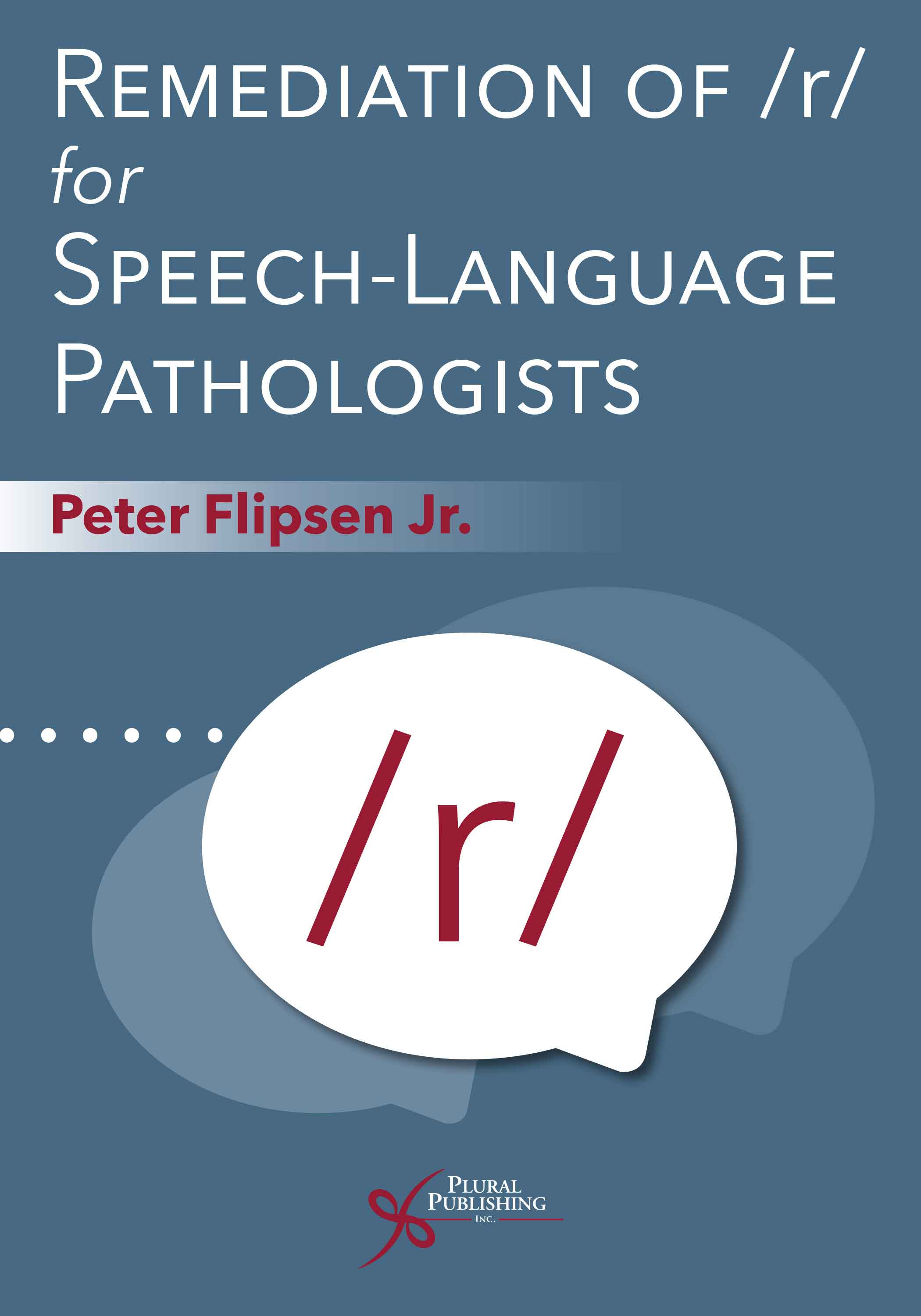
Remediation of /r/ for Speech-Language Pathologists
First Edition
Peter Flipsen Jr.
Details: 228 pages, B&W, Softcover, 7" x 10"
ISBN13: 978-1-63550-287-9
© 2022 | Available
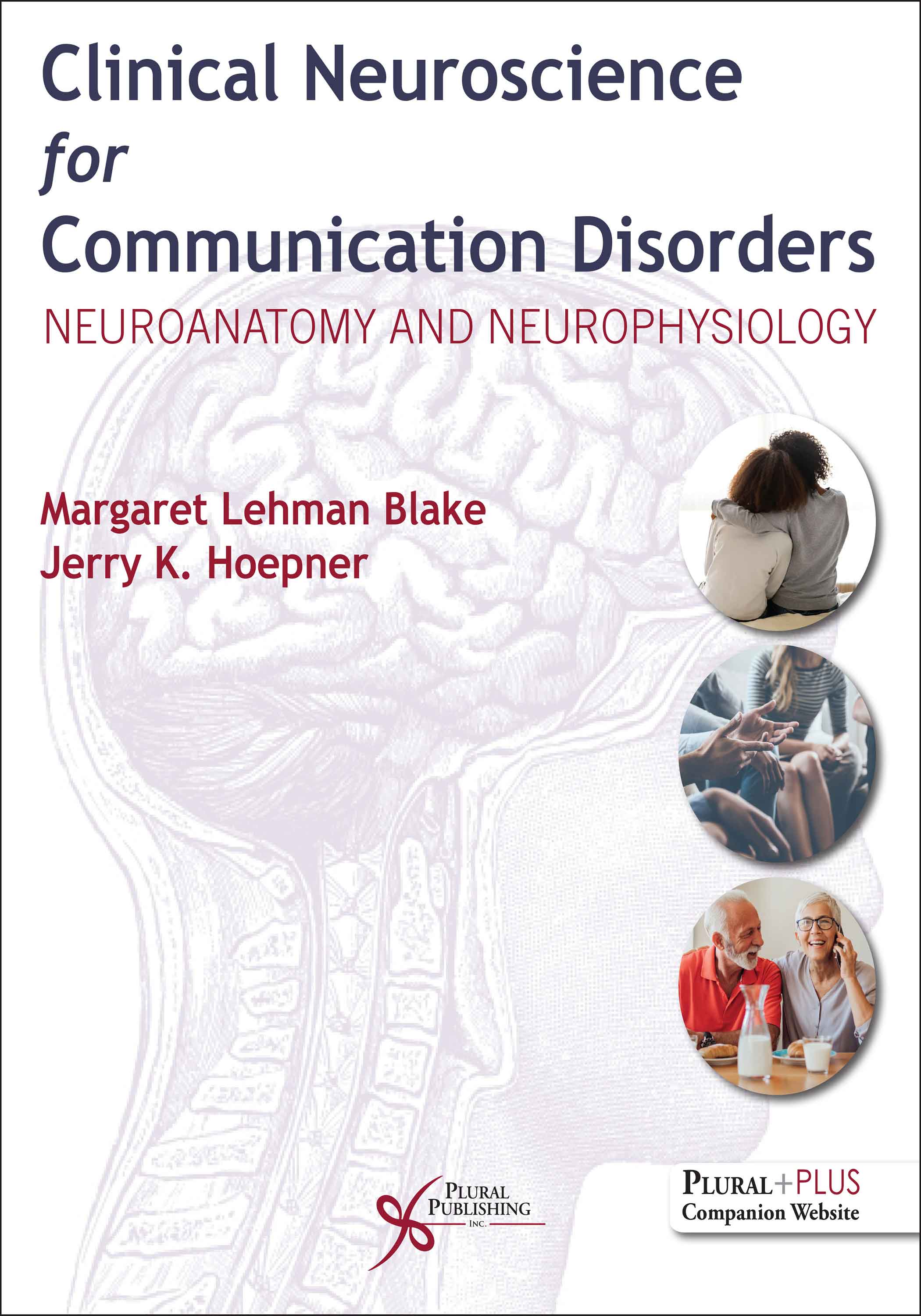
Clinical Neuroscience for Communication Disorders: Neuroanatomy and Neurophysiology.
First Edition
Margaret Lehman Blake, Jerry K. Hoepner
Details: 340 pages, Full Color, Hardcover, 8.5" x 11"
ISBN13: 978-1-63550-365-4
© 2023 | Available

Stuttering: Foundations and Clinical Applications.
Third Edition
Ehud Yairi, Carol H. Seery
Details: 465 pages, B&W, Softcover, 8.5" x 11"
ISBN13: 978-1-63550-355-5
© 2023 | Available

Culturally Responsive Practices in Speech, Language, and Hearing Sciences
Second Edition
Yvette D. Hyter, Marlene B. Salas-Provance
Details: 448 pages, B&W, Softcover, 7" x 10"
ISBN13: 978-1-63550-650-1
© 2023 | Available

Here's How to Do Therapy: Hands on Core Skills in Speech-Language Pathology
Third Edition
Debra M. Dwight
Details: 460 pages, B&W, Softcover, 8.5" x 11"
ISBN13: 978-1-63550-320-3
© 2022 | Available

Interprofessional Education Toolkit: Practical Strategies for Program Design, Implementation, and Assessment
First Edition
Nassrine Noureddine, Darla K. Hagge, William Ofstad
Details: 269 pages, B&W, Softcover, 8.5" x 11"
ISBN13: 978-1-63550-217-6
© 2022 | Available

Treating Selective Mutism as a Speech-Language Pathologist
First Edition
Emily R. Doll
Details: 202 pages, B&W, Softcover, 6" x 9"
ISBN13: 978-1-63550-281-7
© 2022 | Available

AAC for All: Culturally and Linguistically Responsive Practice
First Edition
Mollie G. Mindel, Jeeva John
Details: 200 pages, B&W, Softcover, 7" x 10"
ISBN13: 978-1-63550-285-5
© 2022 | Available

Fundamentals of AAC: A Case-Based Approach to Enhancing Communication.
First Edition
Nerissa Hall, Jenifer Juengling-Sudkamp, Michelle L. Gutmann, Ellen R. Cohn
Details: 545 pages, B&W, Softcover, 8.5" x 11"
ISBN13: 978-1-63550-353-1
© 2023 | Available
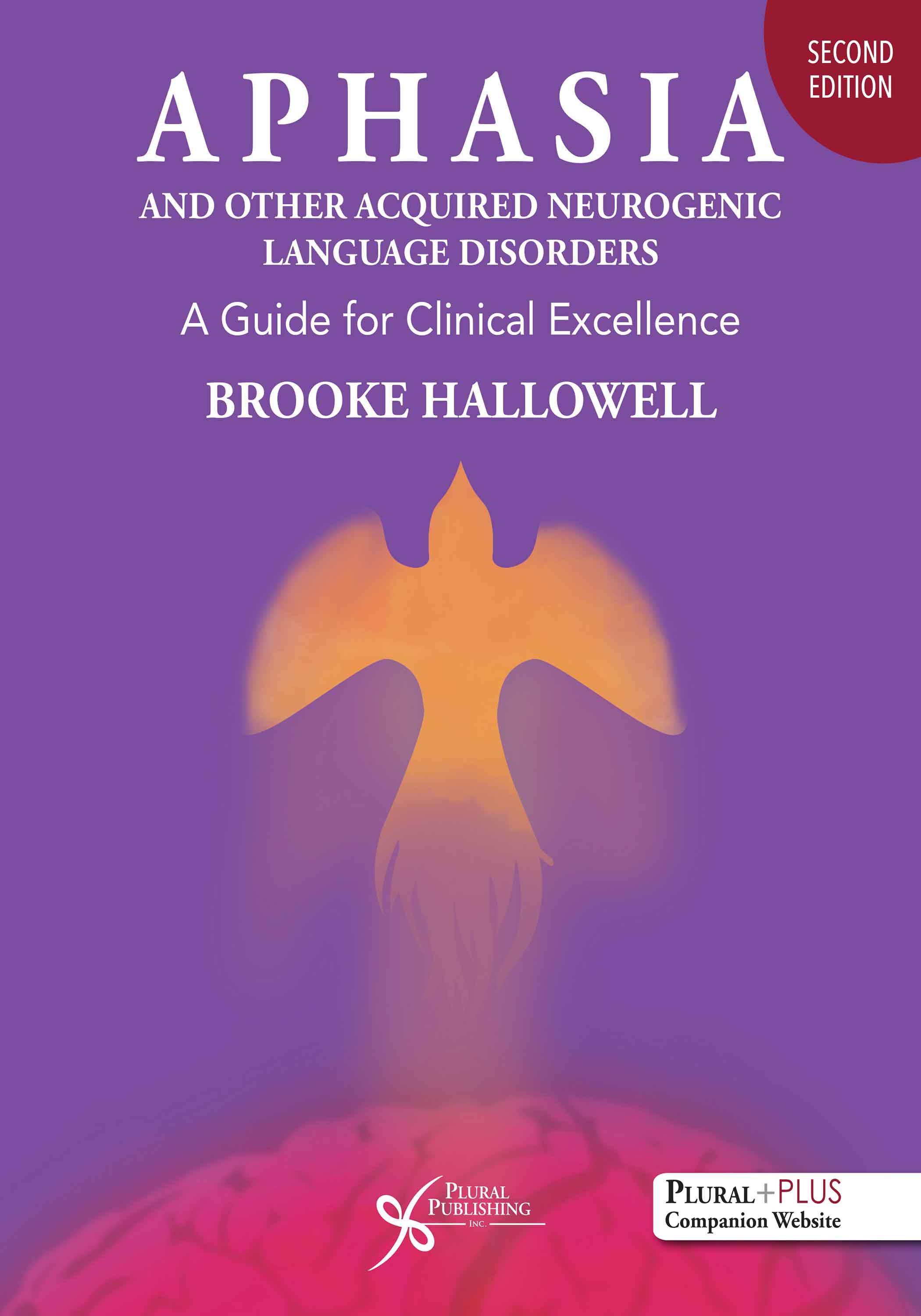
Aphasia and Other Acquired Neurogenic Language Disorders: A Guide for Clinical Excellence
Second Edition
Brooke Hallowell
Details: 629 pages, 2-Color with Full-Color Insert, Softcover, 8.5" x 11"
ISBN13: 978-1-63550-159-9
© 2023 | Available

ECHO: A Vocal Language Program for Easing Anxiety in Conversation
First Edition
Cesar E. Ruiz, Evelyn R. Klein, Louis R. Chesney
Details: 225 pages, B&W, Softcover, 8.5" x 11"
ISBN13: 978-1-63550-330-2
© 2022 | Available
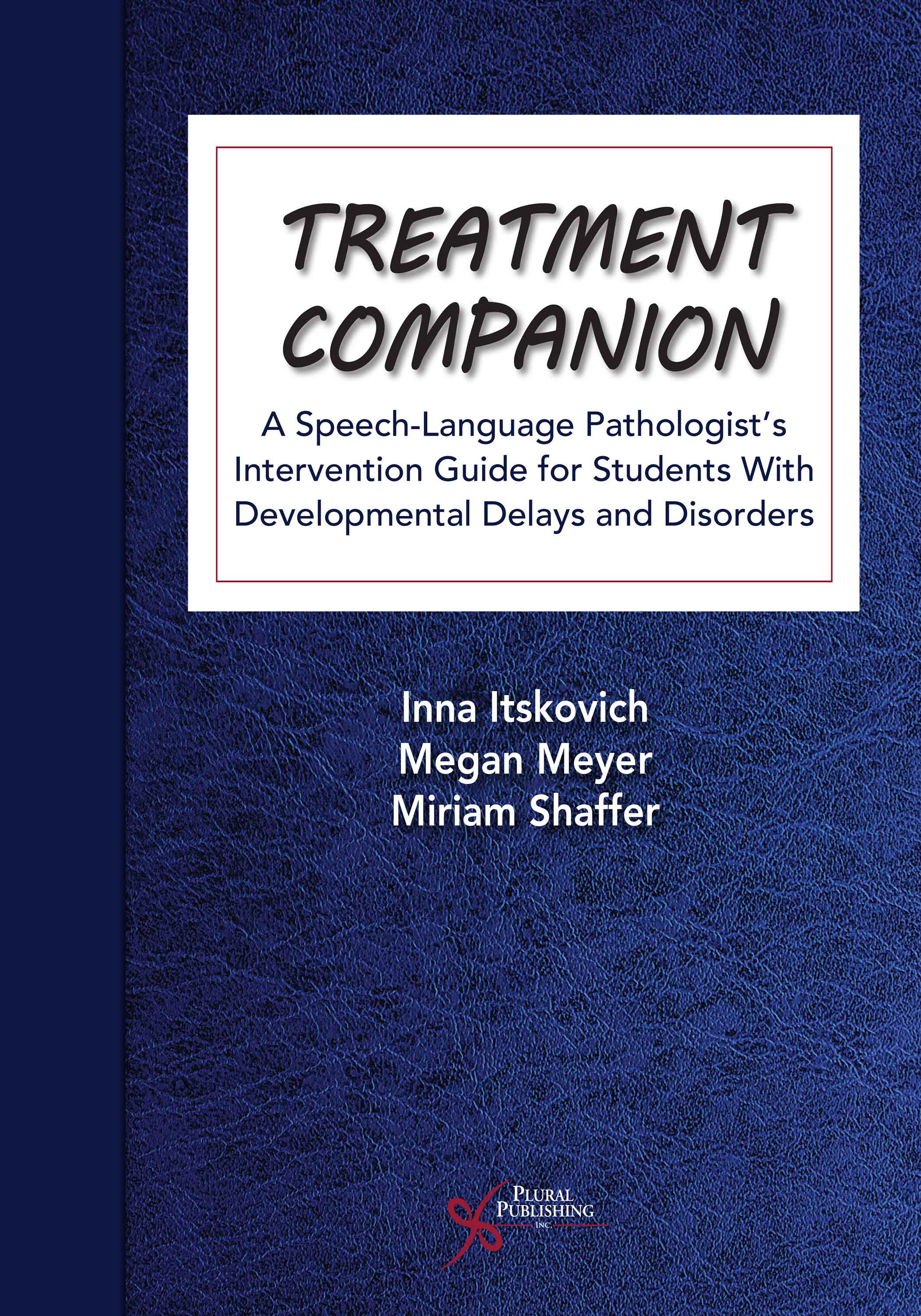
Treatment Companion: A Speech-Language Pathologist's Intervention Guide for Students With Developmental Delays and Disorders
First Edition
Inna Itskovich, Megan Meyer, Miriam Shaffer
Details: 274 pages, B&W, Softcover, 8.5 " x 11"
ISBN13: 978-1-63550-481-1
© 2023 | Available

Professional Issues in Speech-Language Pathology and Audiology
Sixth Edition
Melanie W. Hudson, Mark DeRuiter
Details: 541 pages, Two-Color, Softcover, 7" x 10"
ISBN13: 978-1-63550-655-6
© 2025 | Available


